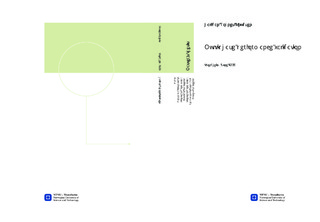| dc.contributor.advisor | Bakken, Lars Eirik | nb_NO |
| dc.contributor.author | Knudsen, Halfdan Rognes | nb_NO |
| dc.date.accessioned | 2014-12-19T13:54:00Z | |
| dc.date.available | 2014-12-19T13:54:00Z | |
| dc.date.created | 2013-09-09 | nb_NO |
| dc.date.issued | 2013 | nb_NO |
| dc.identifier | 646735 | nb_NO |
| dc.identifier | ntnudaim:9574 | nb_NO |
| dc.identifier.uri | http://hdl.handle.net/11250/257489 | |
| dc.description.abstract | The oil and gas industry wishes to further develop multi-phase technology in order to reduce con-struction costs and increase production from existing fields. Both suppliers and operators are in-vesting in development of subsea equipment. The goal is to reduce environmental impact and energy costs.Suppliers are extending their product portfolio with wet gas compressors or high GVF multi-phase pumps. Accurate predictions of performance are important to the customer, as the customer needs the predictions in order to estimate return of investments, and for designing the overall production plant.Well-established models for predicting performance of single-phase and liquid dominated two-phase flow exists. But companies aim to extend these models, in order to also predict perfor-mance of gas dominated flow.Based on literature study and available test data, the goal is to establish reliable routines on two-phase performance calculations. This includes solving challenges related to both calculations and measurements. A laboratory rig have been planned in order to validate different temperature sensors ability to measure in two phase flow. Main focus has been on generating conditions where thermal equilib-rium is absent. Different solutions on how to generate non thermal equilibrium two-phase mix-tures have been presented. Relevant temperature sensors have been chosen and a sensitivity anal-ysis has been performed to make sure they are accurate enough for the assignment. Solutions to challenges like gas phase humidity and local gas phase temperature measurements are presented. In the end a complete procedure on how to perform the tests is suggested. This thesis aimed to validate the functionality of a Direct Integration method implemented in the process simulation tool HYSYS. Trough different examples it has been compared to Shultz and a Matlab implementation of the Direct Integration model presented in this thesis. The HYSYS im-plementation was found to differ from the original Direct Integration method presented by Hun-tington. For polytrophic efficiency calculations it does not seem to be implemented at all. If the Direct Integration method is to be used in performance calculations, better results will be achieved by applying the Matlab implementation presented in this thesis. Industry actors sometimes reduce analysis costs by neglecting heavier parts of the composition. The importance of knowing the exact fluid composition is discussed in this thesis. Results from simulations where heavier components are neglected are presented. It has been found that the accuracy of the performance calculations is highly dependent on the accuracy of the composition. The calculations of polytrophic efficiency are especially sensitive when operating far into the two-phase area. | nb_NO |
| dc.language | eng | nb_NO |
| dc.publisher | Institutt for energi- og prosessteknikk | nb_NO |
| dc.title | Multiphase performance validation | nb_NO |
| dc.type | Master thesis | nb_NO |
| dc.source.pagenumber | 119 | nb_NO |
| dc.contributor.department | Norges teknisk-naturvitenskapelige universitet, Fakultet for informasjonsteknologi, matematikk og elektroteknikk, Institutt for elkraftteknikk | nb_NO |

